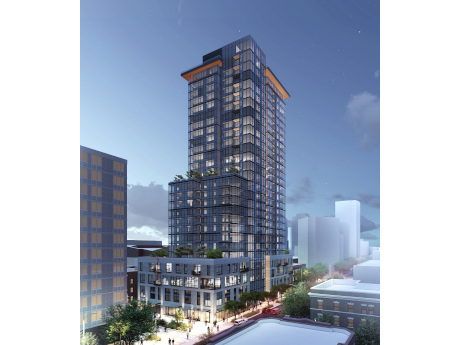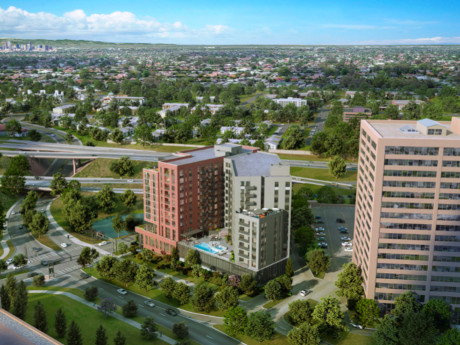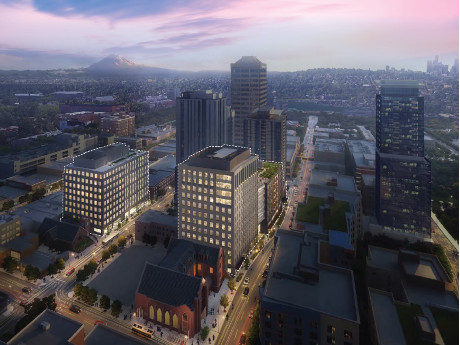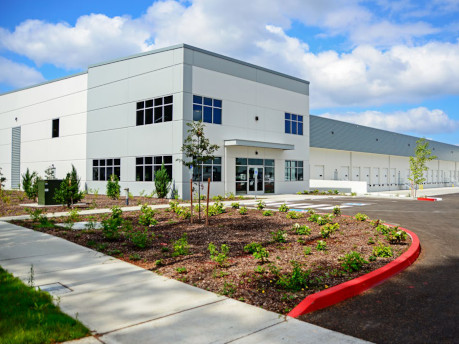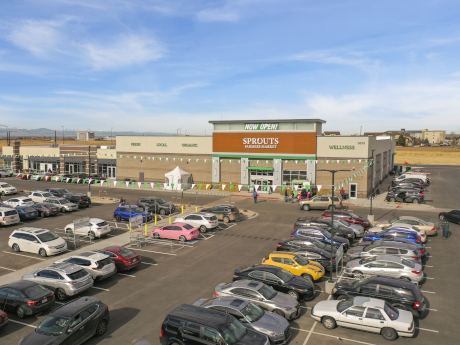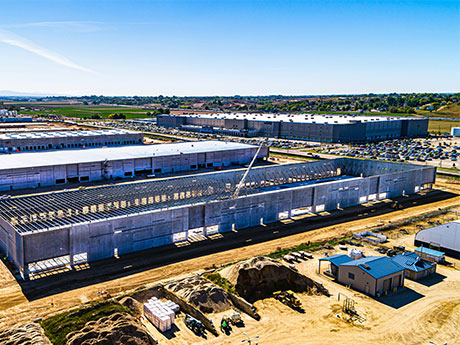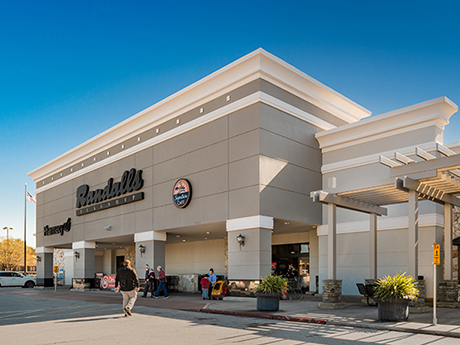By Brian O’Connor, Executive Director, Valuation & Advisory, Cushman & Wakefield The Seattle Metro apartment market has been surprisingly resilient. The market quickly bounced back from the COVID downturn at a robust clip and has continued moving at a healthy pace. During the first six months of 2022, metro Seattle absorbed more than 12,600 units. That already surpasses a typical full year of demand by several thousand units. From January 2022 through June, the market absorbed 3,779 newly constructed units — a respectable level. If you also factor in the decline in existing units, then the market absorbed another 8,886 units. That tells us that the supply of new units was too low…or demand was much stronger than we expected. The market had rebounded to a metro-wide vacancy rate of only 1.33 percent at mid-year 2022, an astoundingly low level. From year-end 2021 to June 2022, overall apartment vacancies declined from 3 percent to 1.33 percent. We do, however, expect vacancies to begin increasing slightly. These rates typically see an uptick as we head into winter. Rent growth also slows during this time. We expect to see the metro-wide vacancy rate start to rise just a bit by year-end 2022, to …
Western Market Reports
By David Gagliano, Senior Vice President and Principal, Fuller Real Estate Leasing trends in the metro Denver office market are continuing their slow progression downward. Inquiries from tenants looking to lease office product is down 10 percent from 2021. Concurrently, we have seen an uptick in smaller office users who are looking for space in lieu of their home office. Landlords have been quick to concede to tenants, incentivizing them with extensive quantifiable tenant improvements and lease rates lower than their competition. Anecdotally, it becomes obvious with nearly every prospective tenant that they are viewing multiple properties. Not only are they viewing several properties, but many have several options within the exact vicinity of the subject property. This trend makes it even more critical for landlords to have the best representation from their brokers. This market instability also speaks to the favor landlords are giving to current tenants upon lease renewal, as capturing occupancy prior to vacating becomes vital. With current and most likely future increases in interest rates, we will see a dip in activity in owner-user purchases that should lead to a rise in leasing activity. The suburban markets are still seeing a surge in migration from the downtown …
By Dino A. Christophilis, Senior Vice President, CBRE; Daniel Tibeau, Associate, CBRE; and Parker Ksidakis, Associate, CBRE Few sectors were as disrupted by the pandemic as retail. While 2020 proved to be a tumultuous year, the last year and a half have demonstrated the resiliency of retail — both in Seattle and nationally. The Seattle economy is performing well for a recovering retail sector, with continued employment growth and increasing retail spending. The Puget Sound is notorious for its lack of new retail development, and the recent years have been no exception. The environment of increasing demand with a flat level of supply results in positive conditions for existing retail space. Like much of the nation, concerns persist in Seattle around inflation, increasing debt costs and a potential slowing in the global economy. However, the situation in Seattle is more positive and nuanced. Growing Investment Activity Year to date, Seattle is poised to outperform the prior year in terms of total investment dollars. The second quarter of 2022 experienced 65 percent greater investment volume relative to the same quarter in 2021. This figure is particularly notable as 2021 was an exceptional year. Investors deployed pent-up capital that was held during the height of the pandemic. Total retail …
Population, Absorption, New Construction Offer Opportunities in the Denver Multifamily Market
by Jeff Shaw
By Chris Mitton, Advisor, Pinnacle Real Estate Advisors Denver has been seeing major growth of new residents from 2020 through the second quarter of 2022. Denver is gaining many residents from coastal cities due to our lower cost of living, and gains of such tech giants as Conga, RingCentral, Xactly, Slack, and Angi. Since 2020, Denver has added 8,100 jobs in business services and 2,900 jobs in the financial activities sector. Over the last five years population growth in Denver has increased 8 percent compared to the 3.8 percent national average. The multifamily market has benefited from this population growth. Denver has absorbed 6,400 units over the past 12 months, placing it in the top 15 metro areas in the country. Colorado has seen record high prices in single family homes as well, which is pricing out many first-time homebuyers. This is forcing many renters to stay in multifamily apartments. However, if you haven’t been living under a rock, you know that the Federal Reserve has been increasing interest rates at a record pace. The single-family market has seen an increase from 1,200 homes for sale during the start of the year to 7,300 homes in August. With this increase in supply …
By Charlie Farra, Senior Managing Director, Newmark The Puget Sound office market has fared better than many peer metro areas during the pandemic. While the market remains tenuous in the region, local office fundamentals have improved to date in 2022. A consistent through the chaos is a flight to quality. If employers expect a return to office, they are being tasked with creating a physical environment that is far more favorable than a home office or local coffee shop. We are referring to this as “commute-worthy real estate.” Energy, collaboration, amenities, views, natural light and safety are some of the main points of focus and, due to current economic conditions, the ability to find such space at discounted pricing is within reason. New office leases are trending toward 75 percent of their pre-pandemic footprint as companies consider how and where to operate their businesses going forward. Professional service companies currently account for the most demand and are in the office more frequently than the technology sector. In tech cities like Seattle, this is a seismic shift from the previous decade, which saw skylines transform from the expansions of Amazon, Microsoft, Meta and Google. Many companies returning to the office are utilizing a hybrid …
Tenant Demand Remains High in Seattle Industrial Market, but Interest Rates Slow Investment Sales
by Jeff Shaw
By Bill Condon, Executive Vice President, Colliers The most significant impact to Seattle’s industrial market this year comes from outside the market. Inflation resulting in raised interest rates has stymied sale activity but done little to slow leasing activity. Tenant demand has remained high, particularly among third-party logistics (3PL), ecommerce and aerospace companies. Logistics remains the main driver for activity and development in submarkets from Tacoma south. This year alone, Holman Distribution leased 353,000 square feet in Frederickson and Maersk leased 246,000 square feet in Lakewood. Both of these cities only had sporadic activity prior to 2020. For 3PL companies, the south Puget Sound/Tacoma area is attractive due to its proximity to the Port of Tacoma and the desirable labor pool in Pierce County. Closer to Seattle, Blue Origin leased 172,000 square feet in Kent, furthering the legacy of aerospace activity in Puget Sound. The rapid rise in interest rates has created a difference in expectations between sellers and buyers, whose interest rates have nearly doubled since the start of this year. This disconnect between the seller’s value and buyer’s ability to purchase is likely to delay transactions until there’s more stability in capital markets nationally. While tenant demand remains robust, there …
By Brandon Wright, Associate, Blue West Capital Retail properties in Colorado have experienced significant cap rate compression over the past five years and are selling for premiums compared to most markets across the country. Since 2019, the average cap rate for a single-tenant retail property in Colorado has compressed by 79 basis points, while cap rates for multi-tenant retail properties have compressed by 74 basis points. Cap rates this year for single- and multi-tenant retail properties in Colorado averaged 5.42 percent and 6.10 percent, respectively, through September 2022. Nationally, the average cap rate for these two property types were 5.62 percent and 6.53 percent. Cap rates in Colorado have remained compressed despite various headwinds facing the market. There’s a notable supply and demand imbalance of high-quality properties. The limited inventory of available properties and strong national demand for Colorado properties has helped keep cap rates near record lows. Public and private REITS, family offices, high-net-worth individuals and 1031 exchange investors remain optimistic on Colorado for its long-term upside and growth, and are looking to deploy capital here. Colorado has a vibrant and diverse economy, in addition to strong demographics that include a young and educated workforce. It is the fifth most educated state, …
By Chris Pearson, Industrial Specialist, TOK Commercial Idaho remains a prime area for industrial growth in 2022, with nearly 180 deals completed across Southern Idaho’s top markets. Activity is strongest in the Boise MSA as more than 1.2 million square feet of net absorption has been recorded so far in 2022. This is up from 1.1 million square feet at the end of June 2021. Top deals for the year include Federated Ordinance leasing 265,200 square feet of new construction in Caldwell, as well as Amazon leasing 141,400 square feet in North Meridian. Overall industrial vacancy has remained low across Idaho. Total vacancy in the Boise area has been below 1.5 percent over the past 12 months. It currently sits at 1.2 percent. Vacancy is slightly higher in the Magic Valley & Eastern Idaho MSAs, with total vacancy above 2.5 percent in both markets. However, total vacancy in Idaho Falls, the largest market in Eastern Idaho, hit a historic low of 1.3 percent in June. Vacancy is also at a record low in Twin Falls, the Magic Valley’s main industrial hub, which is currently at just 0.2 percent. Based on vacancy alone, supply appears to lag behind demand. This should not remain the case for …
By Brandon Rawlins, Principal Broker, and Bronson Rawlins, Retail Lead and Associate, JLL Like much of the country, the Idaho retail market is seeing a strong rebound in various retail sectors that appeal to the return of social gatherings and a hybrid approach to work life. Moreover, experiential retail is making a strong comeback as consumers crave fun and a return to normalcy. According to JLL’s recent Retail Outlook report, retail fundamentals continue to improve across most of the country, but particularly in the Sunbelt states. Shoppers are heading back to stores, moviegoers are going back to the theaters, and new demand for fun and immersive experiences is on the rise. The Boise area is no exception, with the announcement of several new major players, including Top Golf, Scheels and several mixed-use concepts that appeal to the new hybrid work experience that combines food, shopping and residential. Eatertainment concepts — entertainment with an emphasis on food and beverage — saw a national traffic surge of 22 percent from April 2019 levels and more than 36 percent year over year. Interestingly, retail activity is not just taking place in certain submarkets or neighborhoods; there is strong activity throughout the entire state. The impact of these developments will bring new tenants …
By Karena Gilbert, Office & Investment Associate, Colliers With a population of a little more than 795,000, the Boise metro area has consistently ranked as one of the fastest-growing places in the nation. Ada and Canyon counties saw a population increase of 7.8 percent from 2020 to 2022. This growth has brought both business and talent to the Boise area and around the state. In a city already ripe with highly skilled, educated and community-minded people, the influx of more talent helped stimulate the growth of local and newly planted companies. Unemployment was 2.4 percent in June 2022, its lowest since May 2018. We are once again seeing companies that have to work to attract and retain employees in this growing market. Boise office tenants have returned to work. There is a degree of remote work, along with the adoption of hybrid work, as many employers and employees are unsure how many days per week anyone will be required in the office. There is a strong desire to have employees back to work as it fuels collaboration, mentorship and training. Companies that had thought about reducing their footprint are now reconsidering and finding value in having a collaborative environment. Boise has smaller office users …


